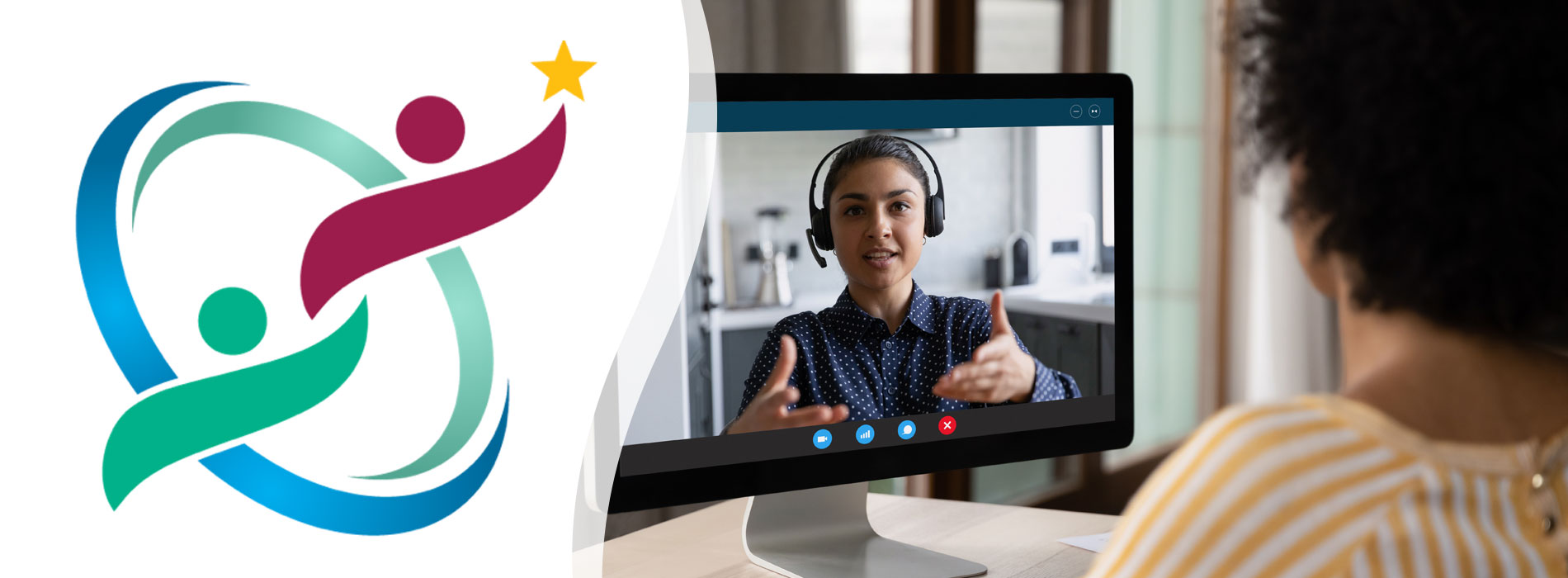
COVID-19 effectively halted in-person training. Moving technical training to a virtual format is relatively easy, but that’s not true for soft skills like coaching skills training. Romar has traditionally delivered its training primarily through in-person workshops, especially for Results-Oriented Coaching Skills (ROCS). Serendipitously, at the beginning of the pandemic, we had been planning an update to the content and delivery of ROCS. Therefore, we decided to take this opportunity to explore incorporating a more flexible delivery approach with this latest version, ROCS 6.0.
ROCS has been a core learning solution for Romar since 1988, with a content update and redesign occurring every 3–4 years. For ROCS 6.0, we decided that in addition to updating the content, we would offer a flexible delivery option, with the live portion of the training delivered via an in-person workshop or a series of webinars. As with all our training programs, we wanted to ensure the live portion was highly interactive and application focused. Below are the lessons we learned from the design, delivery, and testing of ROCS 6.0 as a remote soft skills solution.
Instructional Design and Adult Learning Principles Matter!
One way to transform a learning solution from an in-person session into a virtual environment is to offer the same program via webinar over the same period as the in-person training—just turn on the camera and deliver the same program. However, that approach isn’t learner-focused and tends to make for a boring, long, webinar. Instead, we found a better instructional design was to:
- Condense and focus the pre-work so the learner gets a thorough review of the core concepts and models before the live program.
- Chunk the live sections into 120–150-minute segments. Based on a year’s worth of testing, we found that the optimum period for a highly interactive and engaging webinar is between 120–150 minutes with breaks every 45–60 minutes. Instead of one long 6–8-hour webinar, implementing 3–4 two-hour sessions was most effective.
- Build in lots of questions for group discussion. Lecturing on camera is just as, if not more, boring as lecturing in person.
- Build in group breakouts and interactive activities. After evaluating the ROCS 6.0 content in several sessions, we found that a good design was to have an interactive activity approximately every 45 minutes, so 120–150 minutes of webinar has 2–3 activities. These include small group discussions, case-study problem solving, and role-plays.
Bite-Sized Chunks
One key learning from the pandemic is that learners’ schedules got busier! Learners’ calendars quickly filled with back-to-back webinars, which meant they had less time for pre-work than in the past; this was a huge challenge for us in the redesign of ROCS. Since the program depends on learners coming to the webinar knowledgeable about the core content, we had to devise a way to make it easy and enticing for them to complete the pre-work.
The answer was eLearning. While this is not a remarkable insight since the value of eLearning has been known for some time, the pandemic has made it even more effective because it allows a trainer to condense the learning to the important points, keeping it engaging. Each ROCS 6.0 module includes a 10–15-minute eLearning pre-work, which we found to be the right length for learners to fit into their busy schedules.
We also discovered that it’s easier for a learner to attend a 120–150-minute webinar once a week versus attending an all-day session or a weeklong session. We polled a group of our clients and found that once or twice a week, primarily on Fridays and secondarily on Mondays is the optimal delivery time.
Case Studies and Role-Plays Are Still Effective
Almost all our learning solutions, including previous versions of ROCS, incorporate the learner’s case study into the training. We call this the Integration phase of learning where the learner applies the content to a real situation. The question we had was, “Can we still do this with ROCS 6.0 in a virtual world?” After testing it, we answered with a resounding, “Yes.” We made case-study application a reality by:
Incorporating the case study creation into the eLearning module.
In the first eLearning program, learners, through answering a series of questions, generate their case studies, which they email to themselves for use during the webinars.
Building activities that focus on application of the ROCS content.
In a key section of the training, learners start by working on their case studies, then divide into virtual groups to either role-play the application of that content or meet with a partner to share findings. The role-plays ran smoothly in the virtual environment.
Personalizing feedback from the facilitator.
One of the advantages of the virtual environment is the facilitator was able to move easily between the small group breakouts, which might be more challenging in an in-person workshop.
What Didn’t Work
Not everything we tried worked as we created ROCS 6.0. Following are three things that didn’t work:
- Trying to facilitate the in-person session remotely. We initially tried to deliver the same ROCS content we would deliver in person over the same period, just via webinar. A better approach was to redesign the content for delivery virtually, primarily by condensing it. Six hours of in-person delivery doesn’t transfer into six hours of webinar delivery. The design of in-person and webinar delivery need to be different to accommodate the specific delivery medium.
- Expecting today’s learner to spend hours on pre-work. One lesson from the pandemic is that working remotely means less discretionary time. Initially, we used the same Word document-based pre-work we had used for in-person training. Most learners didn’t complete it. However, when we converted the pre-work to eLearning and condensed it to 10–15 minutes, most learners did complete it.
- A boring lecture may be more painful than an in-person one! While we have always strived to make our training highly interactive, on several occasions in the development of ROCS 6.0, we revisited that important lesson. Virtual learning, just like an in-person workshop, needs to be engaging and interactive!
To Summarize
As we reflect on what we learned in our update to ROCS version 6.0, the biggest lesson was that technology can be an enhancer to training. It allows us to deliver learning in a cost-effective manner that reflects our new post-COVID world. However, soft skills are a bit more challenging to implement from a distance, but a careful redesign for that environment to make it interactive and condensed into manageable chunks can make it effective. The final lesson we learned was to leverage the technology to increase interactivity, not decrease it. In the end, adult learners want to problem solve and apply what they learn in a safe environment, and they can do this effectively in remote training. You just need to design or adjust for the specific delivery medium.




